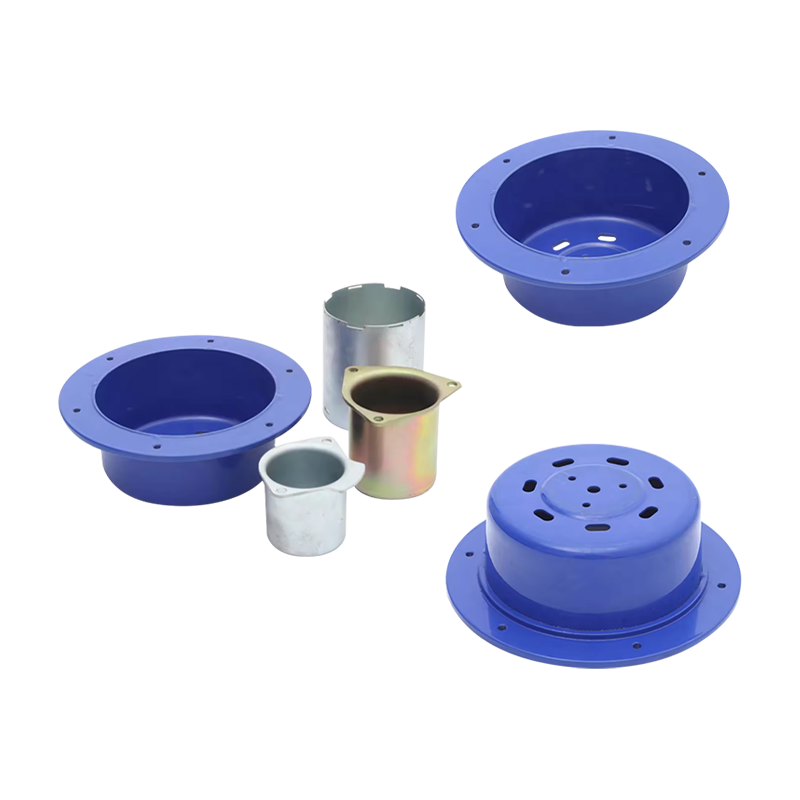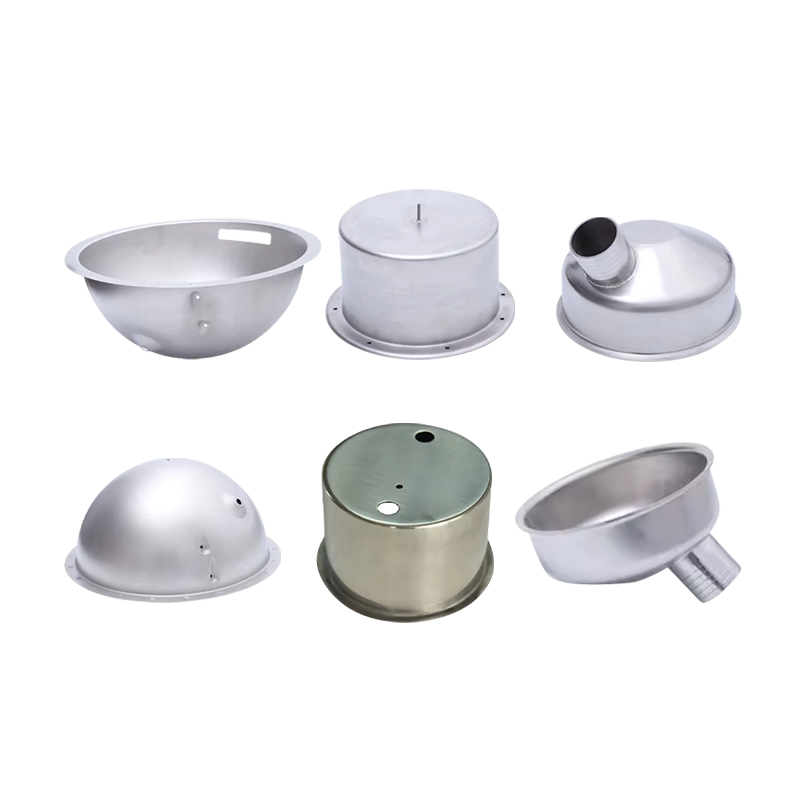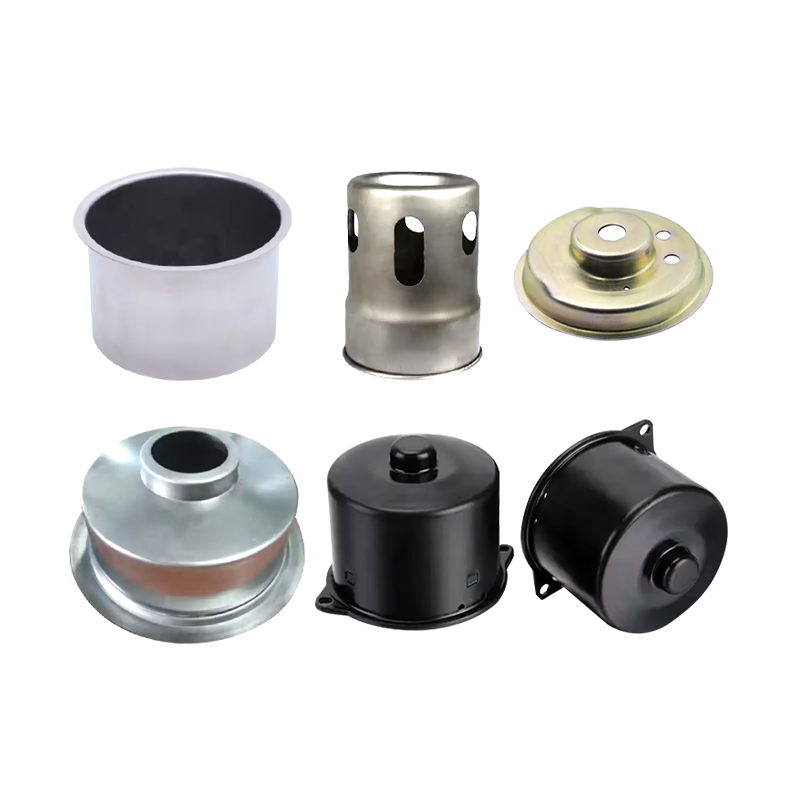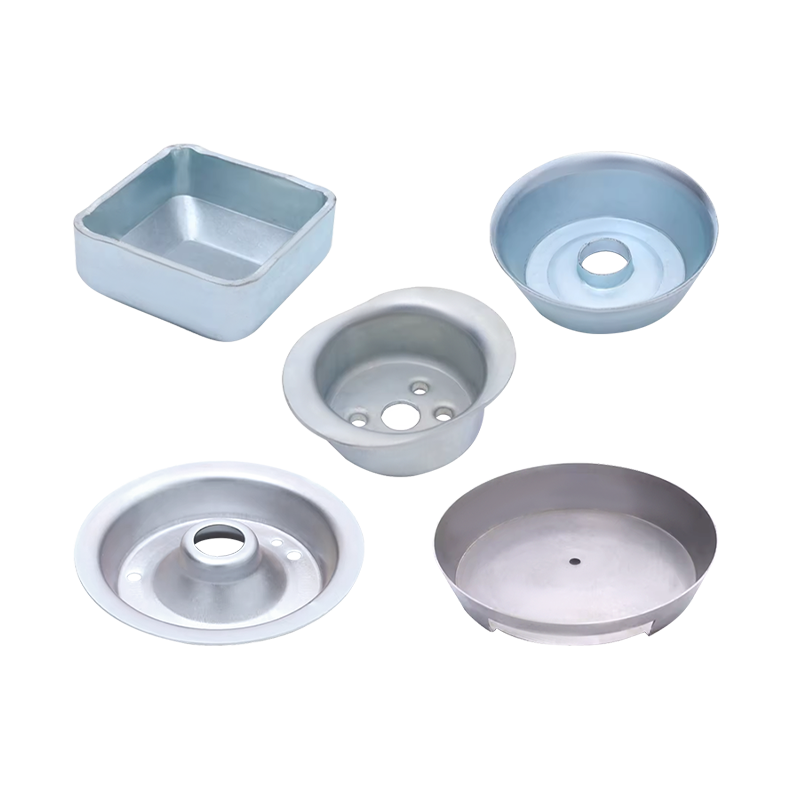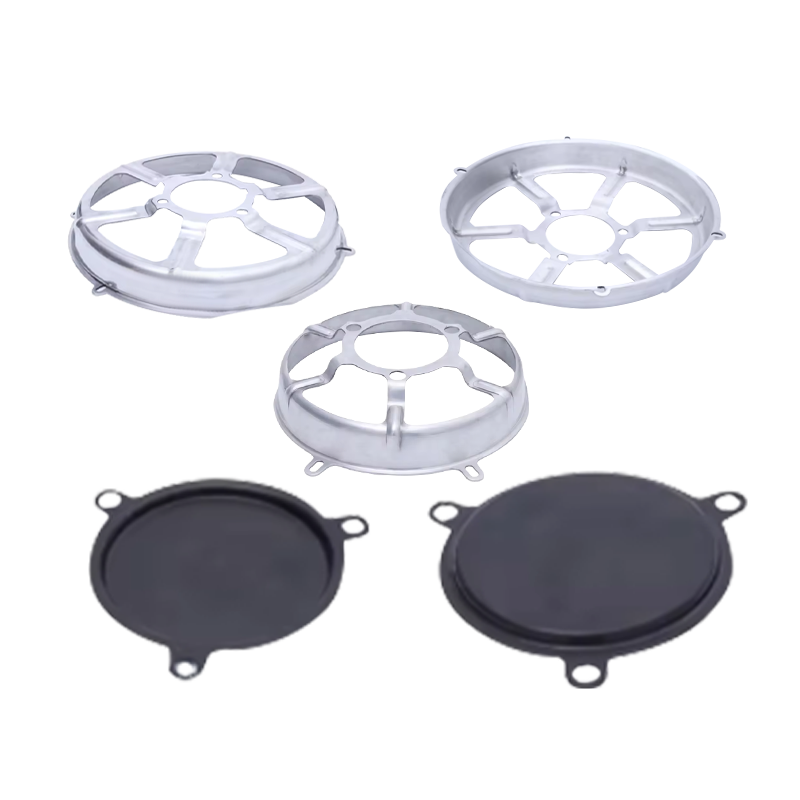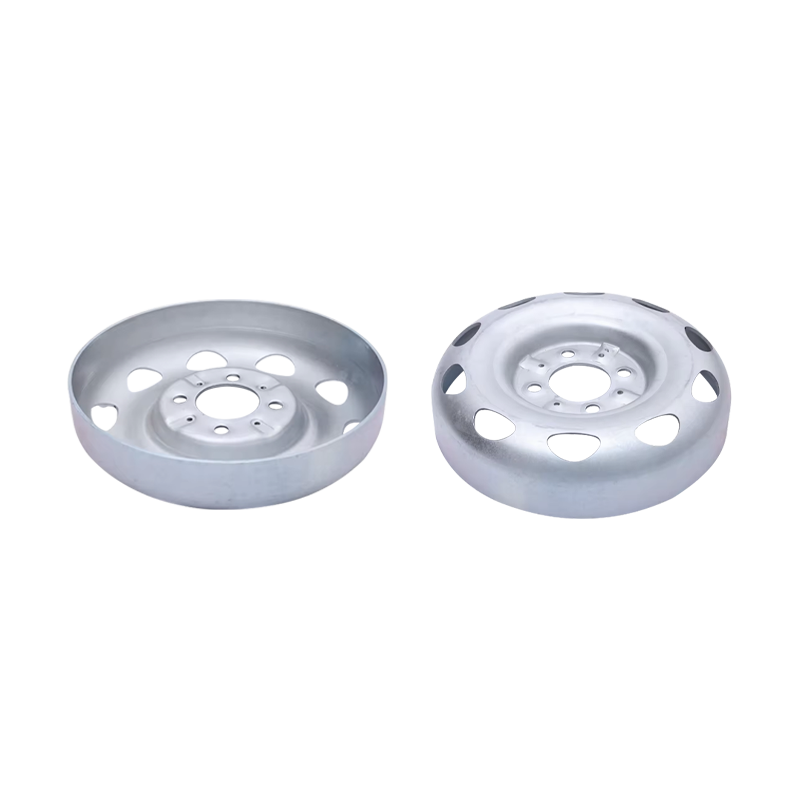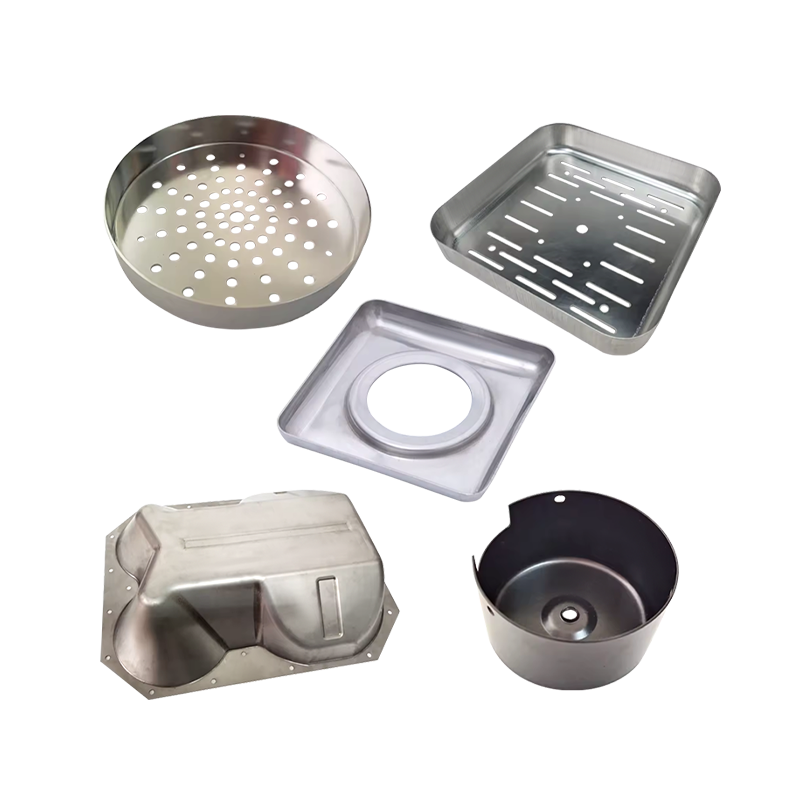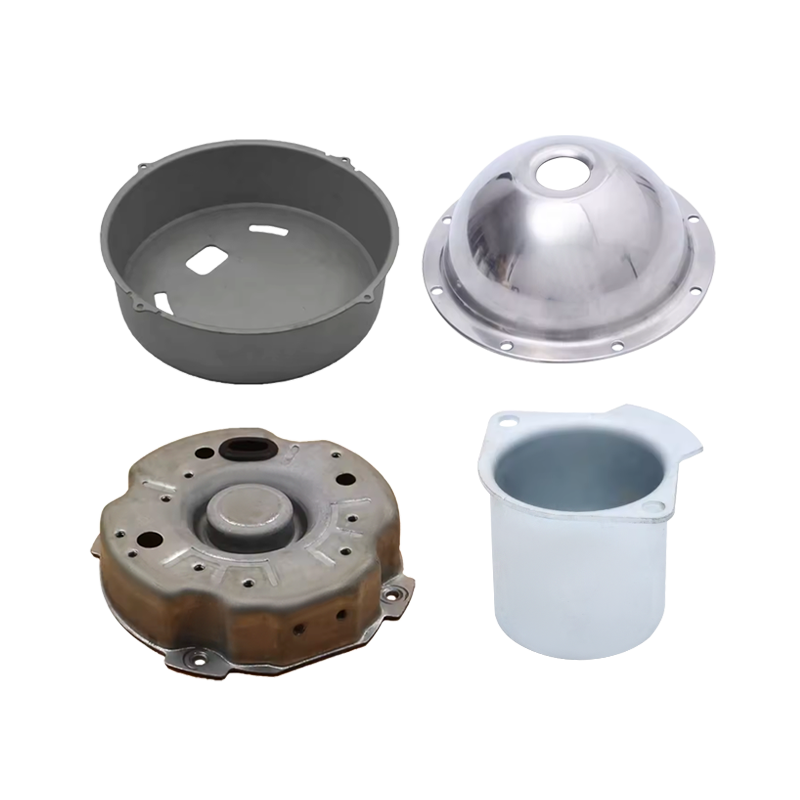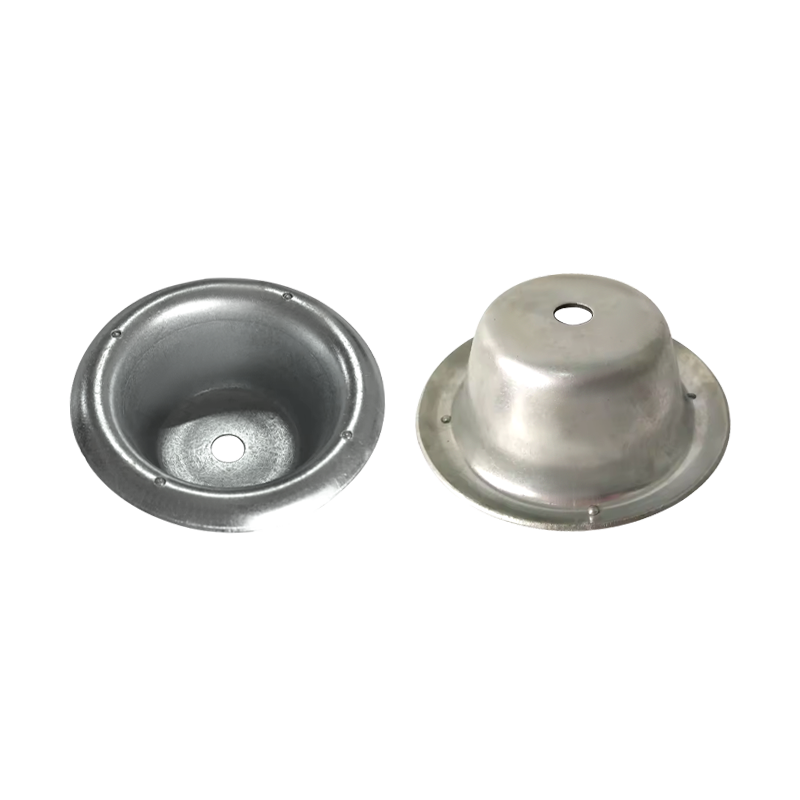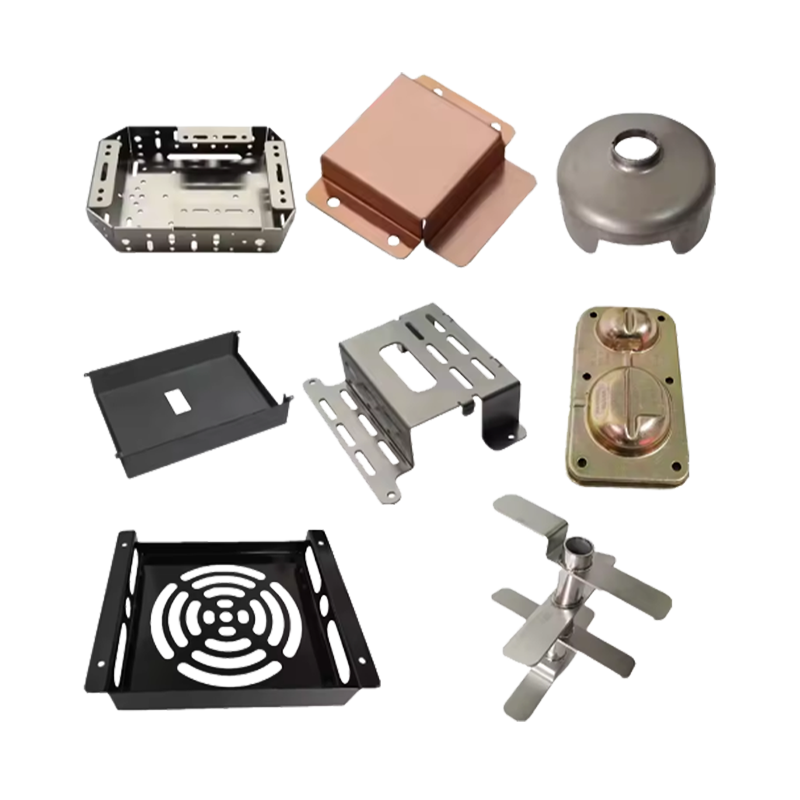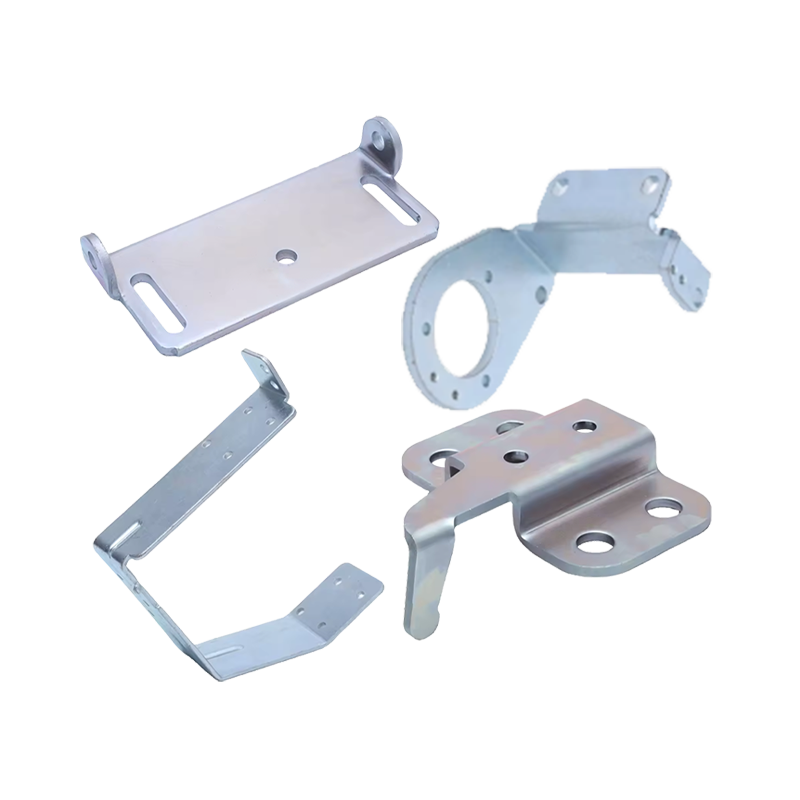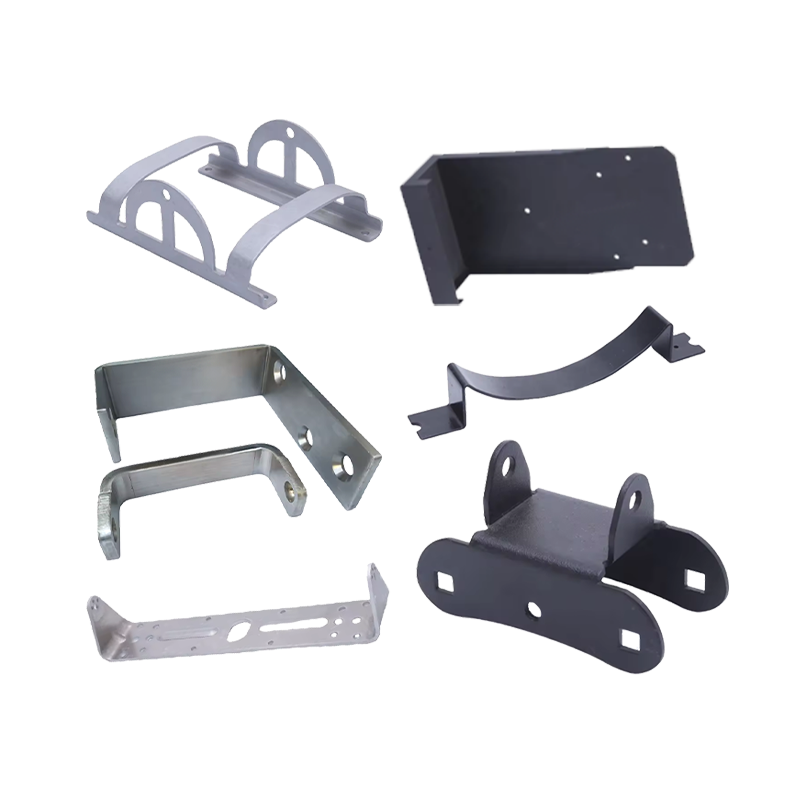Web Menu
Product Search
Exit Menu
News categories
RECENT POSTS
-
Pallet Feet: Plastic or Metal? How to Match Pallet Load Capacity to Avoid Damage?
Oct 31,2025 -
What Surface Preparation Is Needed Before Applying Powder Coated Steel Parts? Step-by-Step Guide
Oct 24,2025 -
Metal Animal Drinking Bowls: Are Plastic Bowls Prone to Breaking and Hiding Bacteria? Can Metal Versions Solve Livestock Water Hygiene Issues?
Oct 17,2025 -
How to Avoid Wrinkling and Cracking in Stainless Steel Deep Drawing Parts Production?
Oct 09,2025 -
What Materials Enhance the Durability of Stamping Parts?
Sep 29,2025
Pallet Feet: Plastic or Metal? How to Match Pallet Load Capacity to Avoid Damage?
Pallet feet are the core supporting components of pallets, bearing the entire weight of goods during storage, handling, and transportation. Their material selection and whether they match the pallet’s load capacity directly determine the pallet’s service life and the safety of goods. However, many users struggle with choosing between plastic and metal pallet feet, and often ignore the load-matching details—leading to frequent pallet foot breakage or even goods damage. This article will systematically analyze the material characteristics of pallet feet and the load-matching method, helping you make a scientific choice.
Content
I. Pallet Feet Material Selection: Plastic vs. Metal, Which Is More Suitable?
Plastic and metal are the two most common materials for pallet feet, each with unique performance advantages and applicable scenarios. The choice should be based on the pallet’s usage environment (indoor/outdoor, dry/humid), load requirements, and cost budget.
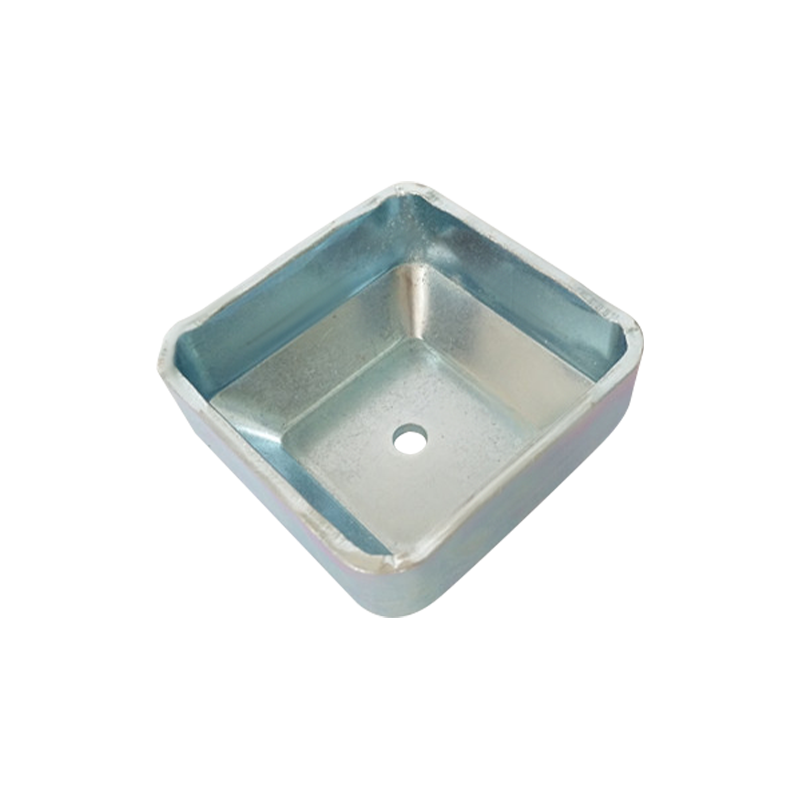
1. Plastic Pallet Feet: Lightweight, Corrosion-Resistant, and Cost-Effective
Plastic pallet feet are usually made of high-density polyethylene (HDPE), polypropylene (PP), or reinforced engineering plastics (e.g., glass fiber-reinforced PP). They are widely used in light to medium-load scenarios due to their balanced performance.
Advantages
- Excellent corrosion resistance: Plastic is not prone to rust or oxidation, even in humid environments (e.g., cold storage, warehouses with frequent water washing) or when in contact with chemicals (e.g., food processing, pharmaceutical industries). Unlike metal, it does not require anti-rust treatment, reducing maintenance costs.
- Lightweight and easy to process: The density of plastic is only 1/5–1/8 of metal (HDPE density is about 0.95 g/cm³), so plastic pallet feet are lighter—this reduces the overall weight of the pallet, making manual handling easier and lowering transportation fuel consumption (especially for long-distance shipping). In addition, plastic can be molded into complex shapes (e.g., hollow structures, anti-slip patterns) in one step, adapting to different pallet bottom designs.
- Good impact resistance and wear resistance: High-quality engineering plastics have strong toughness—when subjected to accidental collisions (e.g., during forklift handling), they are not easy to crack or deform, unlike brittle metals (e.g., cast iron) that may break instantly. The surface of plastic pallet feet can also be treated with anti-wear additives, extending their service life in high-frequency handling scenarios.
- Low cost and wide applicability: The production cost of plastic pallet feet is generally 30%–50% lower than that of metal ones. They are suitable for most light to medium-load pallets (load capacity ≤1500 kg), such as those used for food, electronics, and daily necessities.
Disadvantages
- Limited high-temperature resistance: Most plastics have poor heat resistance—HDPE softens at 80–100°C, and PP deforms at 110–120°C. In high-temperature environments (e.g., near ovens in factories, outdoor summer exposure), plastic pallet feet may lose their load-bearing capacity, so they are not suitable for high-temperature applications.
- Poor load-bearing capacity for heavy loads: Under heavy loads (>2000 kg), plastic is prone to creep (slow deformation under long-term stress), leading to the pallet tilting or the feet collapsing. For example, in the construction industry, where pallets carry heavy materials like steel bars or cement, plastic feet cannot meet the load requirements.
Suitable Scenarios
Indoor dry warehouses, cold storage, food/pharmaceutical industries, light to medium-load transportation (goods weight ≤1500 kg), and environments requiring corrosion resistance or no metal contamination (e.g., electronic component storage).
2. Metal Pallet Feet: High Load-Bearing, High-Temperature Resistant, and Durable
Metal pallet feet are mainly made of carbon steel (e.g., Q235), stainless steel (e.g., 304), or aluminum alloy. They are the first choice for heavy-load, high-temperature, or harsh environment applications.
Advantages
- Super high load-bearing capacity: Metal has high tensile strength and rigidity—carbon steel pallet feet can easily bear loads of 2000–5000 kg, and reinforced stainless steel feet can even withstand more than 8000 kg. This makes them ideal for heavy industries such as machinery manufacturing, construction, and logistics of large equipment.
- Excellent high-temperature resistance: Metal can maintain stable performance at high temperatures—carbon steel can withstand 300–400°C, and stainless steel can resist up to 600°C. In high-temperature scenarios (e.g., near industrial furnaces, hot material transportation), metal pallet feet will not deform or fail, unlike plastic ones.
- Ultra-long service life: Metal is wear-resistant and not easy to age—under normal maintenance (e.g., regular painting for rust prevention), carbon steel pallet feet can be used for 5–10 years, and stainless steel feet can last for more than 15 years. This is far longer than the service life of plastic feet (usually 2–3 years), making metal feet more cost-effective in the long run for heavy-load scenarios.
- Strong environmental adaptability: Stainless steel pallet feet have excellent corrosion resistance (even better than plastic in acidic/alkaline environments), and aluminum alloy feet are lightweight and rust-proof. They can be used in outdoor open-air storage, coastal humid environments (with high salt spray), or chemical workshops with corrosive gases.
Disadvantages
- Heavy weight and high cost: Metal is much denser than plastic—carbon steel pallet feet are 5–8 times heavier than plastic ones of the same size. This increases the overall weight of the pallet, making manual handling difficult and increasing transportation costs. In addition, the production cost of metal feet is higher (especially stainless steel), which may not be suitable for users with limited budgets.
- Prone to rust and need for maintenance: Carbon steel pallet feet are easy to rust in humid environments, so they need regular anti-rust treatment (e.g., painting, galvanizing), which increases maintenance workload and costs. Even galvanized metal feet may peel off the coating after long-term use, requiring re-treatment.
- Poor impact absorption: Metal is rigid but not tough—when subjected to strong collisions (e.g., forklift impact at high speed), metal feet may bend or break, and the impact force may be transmitted to the goods, causing damage. Unlike plastic, which can absorb part of the impact energy through deformation.
Suitable Scenarios
Heavy-load transportation and storage (goods weight >2000 kg), high-temperature environments (>100°C), outdoor open-air storage, coastal or chemical corrosive environments, and industries such as machinery, construction, and heavy equipment logistics.
II. How to Match Pallet Feet to Pallet Load Capacity to Avoid Damage?
Choosing the right material is only the first step; the key to avoiding pallet foot damage is to accurately match the foot’s load capacity to the pallet’s actual load requirements. This requires considering three core factors: the total weight of the goods, the load distribution, and the stress state during use.
1. Step 1: Calculate the "Actual Load per Foot"
A standard pallet usually has 4–6 feet (4 feet are the most common). The first step is to calculate how much weight each foot needs to bear, i.e., the "actual load per foot." The formula is:
Actual load per foot = (Total weight of goods + Weight of pallet) ÷ Number of feet
- Total weight of goods: This is the weight of the goods placed on the pallet, which should be obtained through weighing (do not estimate, as overestimation may lead to overload).
- Weight of pallet: The weight of the pallet itself (excluding the feet) varies by material—wooden pallets weigh 15–30 kg, plastic pallets weigh 8–20 kg, and metal pallets weigh 30–80 kg. This data can be provided by the pallet manufacturer.
- Number of feet: For 4-foot pallets (the most common), the load is evenly distributed to 4 feet; for 6-foot pallets (used for larger pallets), it is distributed to 6 feet.
Example: If a wooden pallet (weight 20 kg) carries 1000 kg of goods, and the pallet has 4 feet, the actual load per foot is (1000 + 20) ÷ 4 = 255 kg.
2. Step 2: Select Pallet Feet with "Safety Margin"
The load capacity marked by the pallet foot manufacturer is the "rated load" (the maximum weight it can bear under ideal conditions). However, in actual use, the load is often unstable (e.g., goods shaking during transportation, uneven force due to forklift lifting), so it is necessary to leave a "safety margin"—the rated load of the feet should be 1.2–1.5 times the actual load per foot.
Reason: The safety margin can offset the impact of unstable loads. For example, if the actual load per foot is 255 kg, the rated load of the feet should be at least 255 × 1.2 = 306 kg (preferably 255 × 1.5 = 382.5 kg). If you choose feet with a rated load of only 255 kg, even a small impact during transportation may cause the feet to exceed the load limit and break.
Note: Do not confuse "static load" and "dynamic load" of pallet feet. Static load refers to the weight when the pallet is stationary (e.g., storage), and dynamic load refers to the weight when the pallet is moving (e.g., forklift handling). The dynamic load of the feet is usually 50%–70% of the static load. When the pallet is used for transportation (dynamic scenario), the rated dynamic load of the feet should be used to calculate the safety margin.
3. Step 3: Consider Load Distribution and Avoid "Unbalanced Load"
Even if the total load per foot is within the rated range, unbalanced load (local overloading of individual feet) can still cause foot damage. This often occurs in the following situations:
- Goods are not placed in the center: If heavy goods are placed at the edge of the pallet (close to 1–2 feet), the load on these two feet will be much higher than the other feet. For example, a 1000 kg goods pile placed at the edge of a 4-foot pallet may cause the two adjacent feet to bear 600 kg each, while the other two bear only 420 kg (total 1020 kg including the pallet). If the feet have a rated load of 500 kg, the two edge feet will be overloaded and break.
- Goods are stacked unevenly: If goods are stacked in a tilted manner (e.g., one side is higher and heavier), the load will be concentrated on the lower side’s feet. For example, a pallet with tilted goods may cause one foot to bear 400 kg, while the others bear only 200 kg—even if the average load is 250 kg, the overloaded foot will be damaged.
Solution to avoid unbalanced load:
- Place goods in the center of the pallet as much as possible, and ensure that the center of gravity of the goods coincides with the center of the pallet.
- Stack goods evenly, avoiding tilting or local stacking of heavy objects. For irregularly shaped goods, use padding (e.g., cardboard, foam) to level the load.
- For pallets carrying extra-heavy single goods (e.g., a 500 kg machine), use 6-foot pallets instead of 4-foot ones—more feet can disperse the load and reduce the risk of unbalanced load.
4. Step 4: Match the Foot Material to the Load Level
Different materials of pallet feet have different load-bearing limits, so the material should be matched to the total load of the pallet:
- Light load (total pallet load ≤1000 kg): Plastic pallet feet are sufficient. Choose HDPE or PP feet with a rated load per foot of 300–500 kg (with safety margin).
- Medium load (total pallet load 1000–2000 kg): Reinforced plastic feet (e.g., glass fiber-reinforced PP) or aluminum alloy feet are suitable. Reinforced plastic feet can bear 500–800 kg per foot, and aluminum alloy feet can bear 800–1200 kg per foot.
- Heavy load (total pallet load >2000 kg): Carbon steel or stainless steel feet are necessary. Carbon steel feet can bear 1000–2000 kg per foot, and reinforced stainless steel feet can bear more than 2000 kg per foot.
Example: A pallet carrying 3000 kg of steel bars (total load including pallet: 3050 kg) with 4 feet. The actual load per foot is 3050 ÷ 4 = 762.5 kg. With a safety margin of 1.5 times, the rated load per foot should be 762.5 × 1.5 = 1143.75 kg. At this time, plastic feet (maximum rated load 800 kg) are insufficient, so carbon steel feet with a rated load of 1200 kg or more should be selected.
III. Other Key Precautions for Choosing and Using Pallet Feet
In addition to material selection and load matching, the following details can further extend the service life of pallet feet and avoid damage:
1. Check the Connection Between Feet and Pallet
The connection between pallet feet and the pallet base (e.g., wooden board, plastic panel) is another vulnerable point. If the connection is loose, the feet may fall off or bear uneven force during use. When purchasing:
- For plastic pallets: Choose integrated molded feet (feet and pallet base are one piece) instead of glued or screwed feet. Integrated molding has higher connection strength and is not easy to separate.
- For wooden/metal pallets: Check whether the feet are fixed with high-strength screws or rivets (at least 2 screws per foot). The screw should be made of anti-rust material (e.g., galvanized steel) to avoid rust and loosening.
2. Choose Feet with Anti-Slip and Wear-Resistant Design
- Anti-slip design: The bottom of the feet should have anti-slip patterns (e.g., grid patterns, convex points) to increase friction with the ground or storage rack. This can prevent the pallet from sliding during placement, reducing the impact on the feet caused by sliding.
- Wear-resistant design: The bottom of the feet is prone to wear due to frequent contact with the ground. Choose feet with thickened bottom (thickness ≥5 mm for plastic feet, ≥3 mm for metal feet) or wear-resistant coatings (e.g., polyurethane coating on plastic feet, galvanized layer on metal feet) to slow down wear.
3. Maintain Pallet Feet Regularly
- Plastic feet: Clean the feet regularly to remove dirt or debris (which may cause uneven force). If cracks or deformation are found, replace them immediately (plastic cracks cannot be repaired and will expand under load).
- Metal feet: Check for rust regularly. For carbon steel feet, repaint the anti-rust coating every 1–2 years. If the feet are bent, do not straighten them by force (this will reduce the material strength); replace them with new ones.
4. Avoid Using Pallet Feet Beyond Their Service Life
All pallet feet have a service life—plastic feet are 2–3 years, aluminum alloy feet are 5–8 years, and carbon steel feet are 5–10 years. Even if there is no obvious damage, the material will age or fatigue over time (e.g., plastic becomes brittle, metal has internal cracks), reducing the load-bearing capacity. It is recommended to replace the feet in batches after reaching the service life, even if some seem intact.
Choosing pallet feet requires a two-step approach: first, select the material (plastic for light/medium load, corrosion-resistant scenarios; metal for heavy load, high-temperature, harsh environments) based on the usage scenario and load level; second, calculate the actual load per foot, reserve a 1.2–1.5 times safety margin, and avoid unbalanced load to match the foot’s rated load.
By following these principles and paying attention to connection quality, anti-slip design, and regular maintenance, you can ensure that the pallet feet are durable, avoid damage caused by improper selection, and protect the safety of goods during storage and transportation. If you have special scenarios (e.g., ultra-heavy load, strong corrosion), you can also customize pallet feet with manufacturers to meet more precise requirements.
No next article
What Surface Preparation Is Needed Before Applying Powder Coated Steel Parts? Step-by-Step Guide
related products
Whether you want to become our partner or need our professional guidance or support in product selections and problem solutions, our experts are always ready to help within 12 hours globally
contact UsPhone:+86 139-5824-9488
FAX :+86 574-86150176
E-mail: [email protected] [email protected]
Address: Unit 2, Building 19, Zhichuangzhizao Park, Chengdong Industrial Zone, Xiangshan, Ningbo,315705, Zhejiang, China

 English
English 中文简体
中文简体 Español
Español